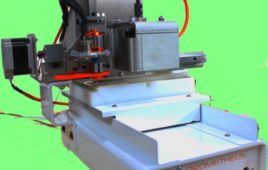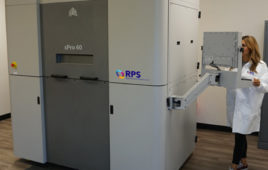Over the centuries the stones continue to weather, slowly losing their inscriptions as the elements erode the carved language and symbols. Preserving these remnants of an ancient language – and capturing the physical depth of the writing and the shape of each stone – was a perfect application for advanced, portable, hand-held 3D scanning.
Read: Artec’s Eva Captures Earliest Recorded Form of the Irish Language
A forensics tent is used to create a controlled lighting environment and ensure measurement can proceed regardless of the highly unpredictable Irish weather. To ensure sufficient power for the scanner and laptop a portable generator is often used as sites can be a long way from mains power.
Scanning is undertaken with the fastest speed setting and with a minimum 400 mm depth of field. The data is recorded with sufficient overlap between scans to ensure easy registration.
Post-processing is done in Artec Studio 9 software: individual scans are edited, aligned, before a final surface is generated using global registration, fusion, and a small objects filter algorithm.
Filed Under: Rapid prototyping




